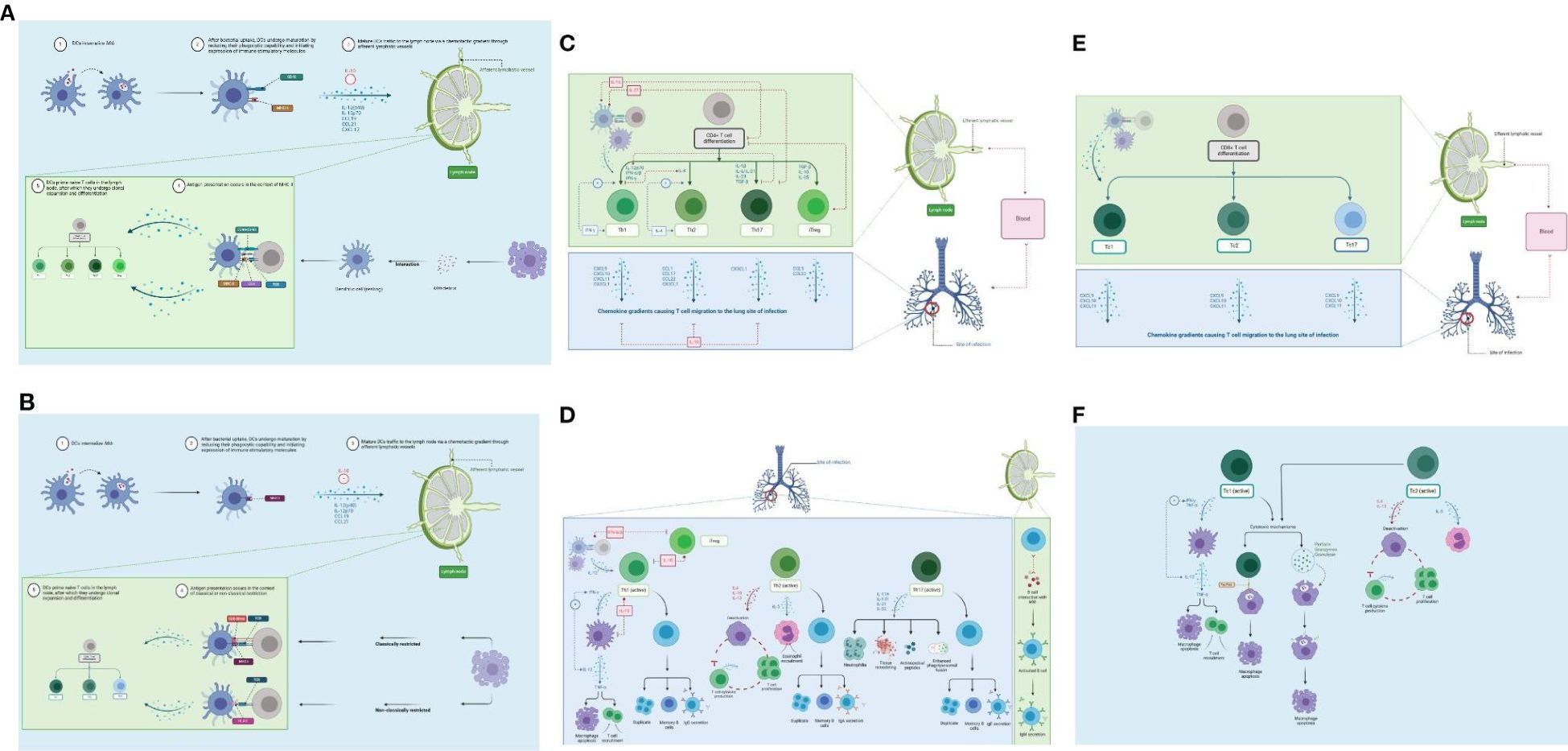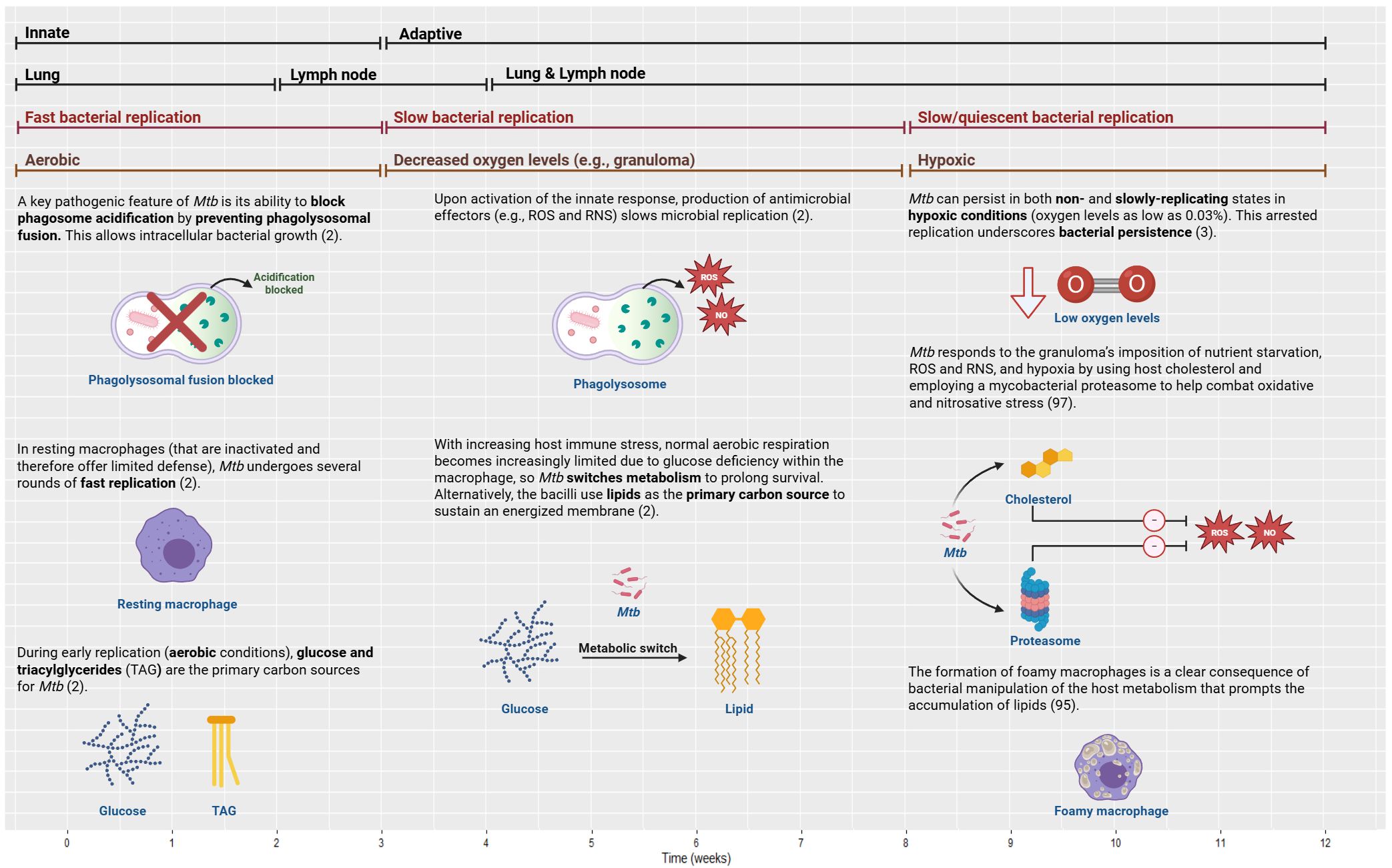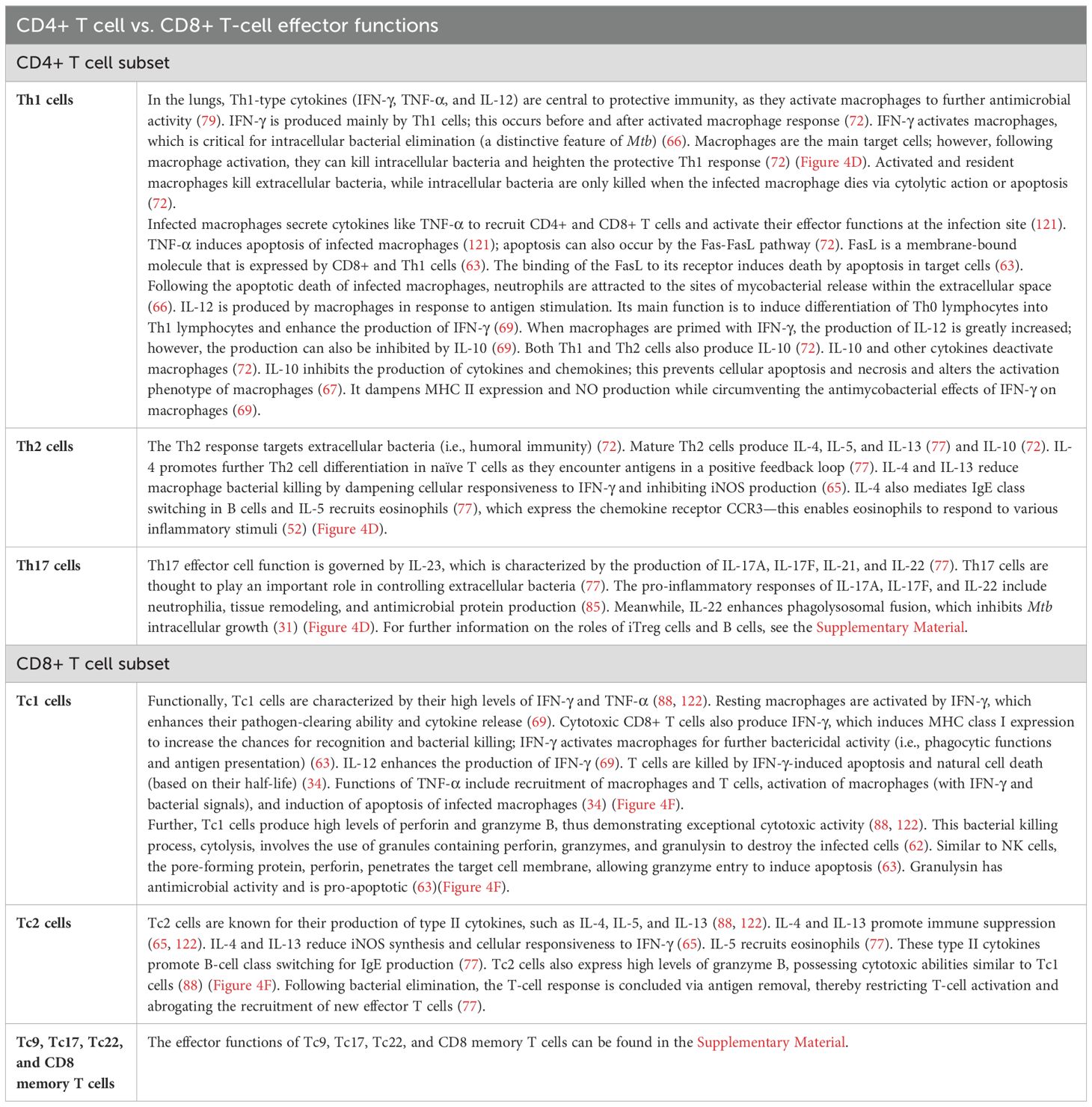- 1Department of Pharmacology, University College London, London, United Kingdom
- 2Istituto per le Applicazioni del Calcolo, Consiglio Nazionale delle Ricerche, Rome, Italy
A Corrigendum on
Characterizing the immune response to Mycobacterium tuberculosis: a comprehensive narrative review and implications in disease relapse
By Rahman F (2024) Front. Immunol. 15:1437901. doi: 10.3389/fimmu.2024.1437901
In the published article, there were errors in the text. The corrections are shown below.
A correction has been made to Section 3, last paragraph. The sentence previously stated: "…a tabular summary of the collated narrative data…”. The corrected sentence is “…a tabular summary of the collated data…”.
A correction has been made to Section 5.1.4, Paragraph 1. The sentence previously stated: “…reactive nitrogen species (NOS), and…”. The corrected sentence is: “…reactive nitrogen species (RNS), and…”.
A correction has been made to Section 5.4.4, Paragraph 1. The sentence previously stated: “(i.e., programmed cell death) (63).” The corrected sentence is: “(i.e., programmed cell death) (63), while granulysin may form pores and kill Mtb (62).”
A correction has been made to Section 5.5.4.2, last paragraph. The sentence previously stated: “Third, Mtb debris extrusion from apoptotic AMs can engage with resting AMs, …”. The corrected sentence is: “Third, Mtb debris extrusion from apoptotic AMs can engage with resting DCs, …”.
A correction has been made to Section 6, Paragraph 1. The sentence previously stated: “The adaptive immune response occurs in the DLN…”. The corrected sentence is: “The adaptive immune response generates in the DLN…”.
A correction has been made to Section 8.3, Paragraph 3. The sentence previously stated: “…from normal aerobic respiration to anaerobic respiration (2). As a result of glucose deficiency, macrophages shift to using lipids…”. The corrected sentence is: “…from normal aerobic respiration to alternative (anaerobic type) pathways (2). As a result of glucose deficiency, mycobacteria shift to using lipids…”.
A correction has been made to Section 11.4.1, Paragraph 1. The sentence previously stated: “Although cynomolgus macaques closely resemble various manifestations of human TB and immunopathology, there are few data regarding their ability to effectively model TBI, for instance (120).” The corrected sentence is: “Although cynomolgus macaques closely resemble various manifestations of human TB (120), no animal model can completely represent human disease (24).”
A correction has been made to Table 1, headers/Neutrophils/Natural killer cells. The headers previously stated: “Player” and “Narrative data extracted”. The corrected headers are: “Player/component” and “Data extracted”. The description previously stated: “…CD8+ T cells; NET production”. The corrected description is: “…CD8+ T cells”. The description previously stated: “…; types of antigen recognition”. The corrected description is: “…; role of granulysin”.
A correction has been made to Table 2, Th1. The sentence previously stated: “TNF-α ultimately induces apoptosis of infected macrophages (121) by Fas-Fas ligand (FasL) (72).” The corrected sentence is: “TNF-α induces apoptosis of infected macrophages (121); apoptosis can also occur by the Fas-FasL pathway (72).”
In the published article, there was an error in Figure 4A as published. The MHC I presentation icons have been deleted as this applies to CD8+ T cells. The corrected Figure 4A appears below.

Figure 4. Adaptive immune response. (A) DC maturation and migration from the lungs (blue) and presentation to naïve CD4+ T cells in the lymph nodes (green). As maturation occurs, DCs migrate through the afferent lymphatic vessels and enter the T-cell area of the DLN. This migration is influenced by IL-12 release and chemokines. IL-10 can block this movement. DCs provide two primary actions within the DLN: naïve T-cell recruitment and antigen presentation. (B) DC maturation and migration from the lungs (blue) and presentation to naïve CD8+ T cells in the lymph nodes (green). CD8+ T cells can detect Mtb antigens (as peptides) presented by both classical and non-classical MHC molecules. (C) CD4+ T-cell differentiation in the lymph node (green) and migration to lungs (blue). Antigen-specific naïve CD4+ T cells undergo clonal expansion and effector differentiation. CD4+ T cells sense cytokines, which activate differentiation programs that result in their polarization toward specialized T-helper cell subsets. (D) CD4+ T-cell effector functions in the lungs (blue) and lymph nodes (green). Th1 cells produce IFN-γ to activate macrophages (eliminates intracellular Mtb). The Th2 response targets extracellular bacteria (i.e., humoral immunity). Th17 effector function is driven by IL-23; production of IL-17A, IL-17F, IL-21, and IL-22 to control extracellular bacteria. (E) CD8+ T-cell differentiation in the lymph node (green) and migration to the lung (blue). Following antigen presentation, CD8+ T cells can differentiate into Tc1, Tc2, and Tc17 cells. (F) CD8+ T-cell effector functions in the lungs (blue). Tc1 cells produce high levels of IFN-γ and TNF-α. Tc2 cells produce type II cytokines, which promote immune suppression. DC, dendritic cell; DLN, draining lymph node. Created with BioRender.com.
In the published article, there was an error in Figure 6 as published. “Anaerobic” label changed to “Decreased oxygen levels (e.g. granuloma)” for clarity; “NOS” changed to “NO”/”RNS”; lipid icon changed to cholesterol. The corrected Figure 6 appears below.

Figure 6. Bacterial growth and manipulation in TB over time from innate to adaptive (first bars), with the associated compartments (second bars), bacterial replication rates (third bars), and oxygen level/conditions (fourth bars). To establish persistence, Mtb employs several effector mechanisms within the host cells and the granuloma. TB, tuberculosis; NO, nitric oxide; RNS, reactive nitrogen species; ROS, reactive oxygen species. Created with BioRender.com
In the published article, there was an error in Supplementary Tables 1-3: “NOS” changed to “NO”; section citations/cross-references changed to inline citations for clarity. Table 3: (IL-5) changed “Immune suppression” to “Recruits eosinophils”; (TGF-β) changed “Chemotactic gradient to recruit immune cells” to “Anti-inflammatory effects”; (PGE2) changed “Downregulates production in phagocytosing macrophages to diminish the anti-inflammatory effect” to “Downregulates pro-inflammatory cytokine production in phagocytosing macrophages”. Minor formatting changes made. The correct supplementary material has been updated in the original article.
The author apologizes for these errors and states that this does not change the scientific conclusions of the article in any way. The original article has been updated.
Publisher’s note
All claims expressed in this article are solely those of the authors and do not necessarily represent those of their affiliated organizations, or those of the publisher, the editors and the reviewers. Any product that may be evaluated in this article, or claim that may be made by its manufacturer, is not guaranteed or endorsed by the publisher.
Keywords: immune response, tuberculosis, adaptive immunity, innate immunity, granuloma, relapse
Citation: Rahman F (2025) Corrigendum: Characterizing the immune response to Mycobacterium tuberculosis: a comprehensive narrative review and implications in disease relapse. Front. Immunol. 16:1560113. doi: 10.3389/fimmu.2025.1560113
Received: 13 January 2025; Accepted: 13 February 2025;
Published: 17 April 2025.
Edited by:
Marina De Bernard, University of Padua, ItalyReviewed by:
Srinivasa Reddy Bonam, Indian Institute of Chemical Technology (CSIR), IndiaCopyright © 2025 Rahman. This is an open-access article distributed under the terms of the Creative Commons Attribution License (CC BY). The use, distribution or reproduction in other forums is permitted, provided the original author(s) and the copyright owner(s) are credited and that the original publication in this journal is cited, in accordance with accepted academic practice. No use, distribution or reproduction is permitted which does not comply with these terms.
*Correspondence: Fatima Rahman, ZmF0aW1hLnJhaG1hbi4xOEBhbHVtbmkudWNsLmFjLnVr
 Fatima Rahman
Fatima Rahman